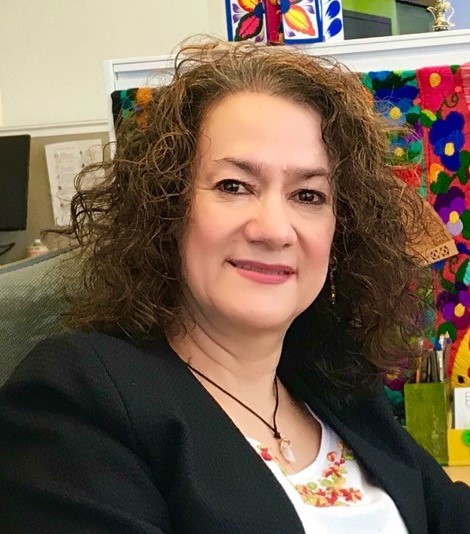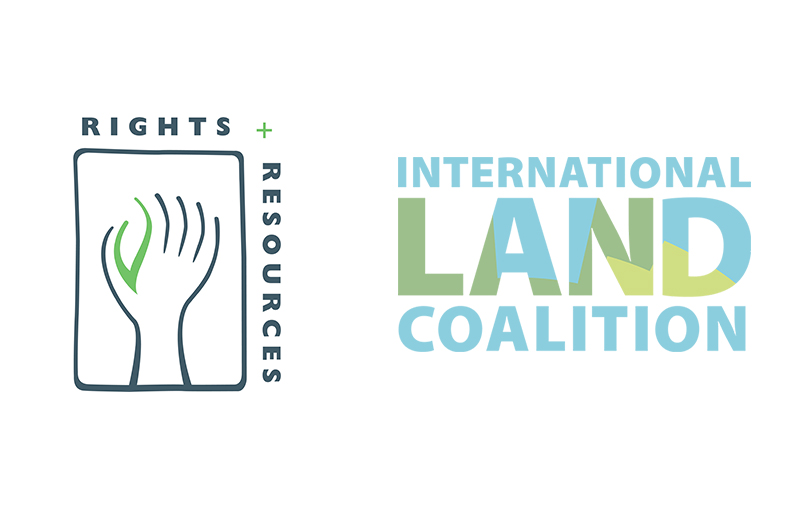The Stand For Her Land Secretariat is pleased to announce that The International Land Coalition (ILC), and Rights and Resources Initiative (RRI) have joined the campaign’s global steering committee.
“With ILC and RRI on board, our vision of building a global women’s land rights movement is closer than ever to becoming a reality,” said Jennifer Abrahamson, Head of the S4HL Global Secretariat. “With their wealth of expertise in women’s land rights, community land tenure systems, and inclusive, collective action, the campaign is now primed to scale and deepen its impact in new countries around the world.”
The International Land Coalition is a people centered land governance – a global alliance of civil society and farmers’ organizations, United Nation’s agencies, NGOs and research institutes with the collective goal to realize land governance for and with people at the country level, responding to the needs and protecting the rights of those who live on and from the land.
The Rights and Resources initiative is a global coalition comprised of more than 200 organizations dedicated to advancing the land and resource rights of local peoples— informed and driven by Indigenous Peoples, Afro-descendants, and local communities themselves working to secure indigenous, Afro-descendant, and community land rights—including the rights of the women within these groups.
We recently spoke with our two new Steering Committee members, Esther Muiru, ILC’s Global Women’s Land Rights Manager, and RRI’s Omaira Bolaños, Director, Latin America & Gender Justice Programs, about why they joined Stand For Her Land and why it matters to their work advancing women’s land rights.
Q: Why are you joining the S4HL Campaign?
 Muiru: ILC participated in initial discussions leading to the creation of the Stand For Her Land. Since then, ILC has increased internal capacity and experience on women’s land rights – and sees the S4HL campaign as an excellent opportunity for strategic collaboration with Landesa and other campaign members. This collaboration is important especially now, during a time of crisis, as COVID-19 is exacerbating already poor land governance putting women at a disadvantage and risking the reversal of past gains. We now want to join efforts to push for the realisation of women’s land rights.
Muiru: ILC participated in initial discussions leading to the creation of the Stand For Her Land. Since then, ILC has increased internal capacity and experience on women’s land rights – and sees the S4HL campaign as an excellent opportunity for strategic collaboration with Landesa and other campaign members. This collaboration is important especially now, during a time of crisis, as COVID-19 is exacerbating already poor land governance putting women at a disadvantage and risking the reversal of past gains. We now want to join efforts to push for the realisation of women’s land rights.
 Bolaños: The campaign is bringing visibility to the relationship between women’s access to land and women’s empowerment. This perspective coincides with RRI’s mission in terms of securing rights for Indigenous Peoples, Afro-descendants, and local communities, including the women within those communities. RRI brings knowledge about the relationship between women’s rights to land and collective tenure systems that can add another layer to the campaign. We’ve joined the campaign not only as a member but as part of the steering committee, and we are excited to have a role in helping our colleagues identify opportunities to work together to influence policymakers, support the voices of different organizations, and bring new ideas to the campaign.
Bolaños: The campaign is bringing visibility to the relationship between women’s access to land and women’s empowerment. This perspective coincides with RRI’s mission in terms of securing rights for Indigenous Peoples, Afro-descendants, and local communities, including the women within those communities. RRI brings knowledge about the relationship between women’s rights to land and collective tenure systems that can add another layer to the campaign. We’ve joined the campaign not only as a member but as part of the steering committee, and we are excited to have a role in helping our colleagues identify opportunities to work together to influence policymakers, support the voices of different organizations, and bring new ideas to the campaign.
Q: How do you see this adding value to your current work?
Muiru: ILC’s commitment to promoting equal land rights for women is at the core of our work. Not only is it one of ten commitments defined by ILC’s membership to jointly achieve our shared goal, but it is also a cross-cutting concern in all other commitments. Participating in S4HL is an opportunity to emphasise the importance of equal land rights for women in ILC-supported multi-stakeholder platforms at the country level, the National Engagement Strategies (NES), as well as to link the campaign to regional Commitment-Based Initiatives (CBIs) focusing on Commitment 4, which covers a variety of approaches and best practices for achieving equal land rights for women. In addition, ILC members have developed and tested tools and approaches for promoting and reinforcing women’s land rights that we can build on and complement.
Bolaños: Connecting and collaborating with organizations that are working on the individual as well as the collective approach to women’s land rights adds value to our work by deepening our understanding of land and women’s empowerment. Increasing the scope of networks that we collaborate with and that provide input on our work will also help strengthen our advocacy at the national and international level. And as the platform gets stronger, it will be a good space to bring visibility to a key part of our agenda – strengthening the land rights of indigenous, local community, and Afro-descendant women.
Q: Is there anything in particular that inspired you to join the S4HL Campaign?
Muiru: ILC believes collaborative partnerships with like-minded organisations are the best way to address complex problems, hence the interest to become a member in the implementation and leadership of the S4HL campaign, joining hands with many of its members, such as Landesa, and partners.
Bolaños: In the Indigenous language Kichwa, there is a term, “randi randi,” that can be translated as “giving and receiving.” It signifies that we both give to each other in a way that reinforces reciprocity and solidarity. We wanted to connect with other groups in the campaign in this way: collaborating with different groups that are working to advance this issue from different perspectives, benefiting from the shared knowledge and experience that we all bring to advance our common goals.
Q: In what ways do you see the Stand For Her Land Campaign able to be an effective vehicle for change?
Muiru: The needs of indigenous, pastoralist and local women and their communities are at the center of the campaign – with women themselves playing an important role in the campaign at country level. Moreover, the campaign builds on the individual strengths of participating organizations, complementing each other’s resources and capacities. The campaign also aims to systematically connect with initiatives that are grounded at the local, national, regional and international level, while addressing both emerging challenges like COVID-19. This collaborate, adaptable, and inclusive design makes the campaign a sustainable and effective vehicle of change.
Bolaños: I see the campaign as an effective vehicle for change because it works with different types of organizations on the ground with a common goal of advancing women’s land rights. This sort of coordination helps unite and amplify the call for change across the local and national levels. This is an important tool to influence different actors at different scales, targeting specific opportunities for policymaking and implementation changes that can make a big difference on the ground. At the same time, we are still learning from the campaign having just joined it!

